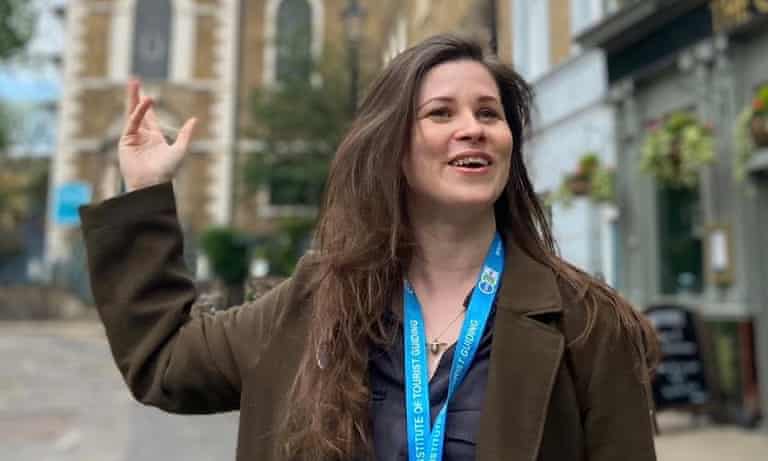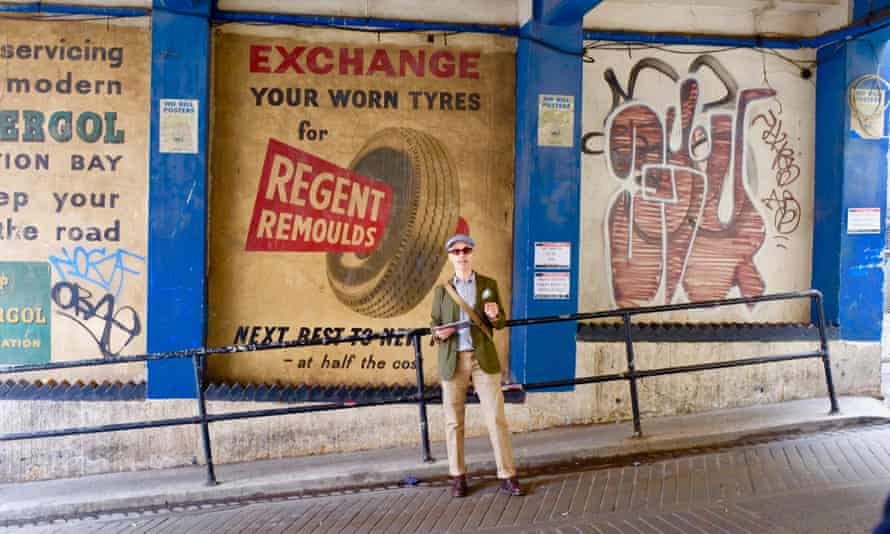A normal sunny day in June would see the Tower of London as busy as a beehive, with 50 or more of the capital’s Blue Badge guides leading tour groups around the Jewel House and the Bloody Tower. Since it reopened on 19 May, the Tower has seen just a handful of tours, and Britain’s tour guides are facing a bleak time as the pandemic enters its second summer.
The first year of Covid was devastating for the tour guiding industry. Tourism from overseas collapsed, locals went into lockdown, and social distancing rules left guides without a single booking. Now, with the crisis in its second year, many are wondering how long the industry can survive without any tourists to guide.
“With the lack of overseas visitors, very few guides have led an in-person tour since March 2020,” says Carole Hiley, president of the Institute of Tourist Guiding (ITG), the organisation that trains Britain’s professional Blue Badge guides. “We get most of our work in the summer, but with so few inbound visitors, this summer is looking almost as bad as last summer.”
According to the latest statistics from VisitBritain, trips to the UK from overseas fell from 40.9 million in 2019 to 11 million in 2020, with a rise of just 2% expected in 2021. For tour guides, foreign tourists make up 90% of business.

“In London particularly, guides are dependent on American tourists for their bread and butter,” says ITG communications chair David Poyser. “Some groups from the continent, like French schoolkids, aren’t able to come because of Brexit rules on travel using national ID cards and collective passports, so it’s been a double whammy.”
This wasn’t how it was supposed to be. At the start of 2020, VisitBritain predicted a 6.6% increase in spending by overseas visitors, with 6.6 million tourists expected to join a guided tour. With a second summer season hanging in the balance, Britain’s 4,000 active accredited tour guides face a worrying summer. According to a recent ITG survey, 71% of guides expect to earn limited income in 2021/22, and 11% expect to make a loss.
“With three kids, I didn’t have the luxury of waiting for work,” says Blue Badge guide Nigel Rundstrom, owner of Mirandus Tours. “So I’ve been doing a succession of part-time jobs – contact tracing, call centre customer service, working on the census – but it’s brought in nowhere near the income I’d be making from guiding.”
Most of the UK’s accredited tour guides are self-employed, but ITG data suggests that 44% have fallen through the gaps in the government’s Self-Employment Income Support Scheme (SEISS). Rundstrom is now part of an action group lobbying MPs and the Department for Digital, Culture, Media and Sport for proper support for the guiding industry.

According to ITG estimates, guiding work declined by 99% in 2020, but only 25% of guides have found an alternative source of income. The psychological impact has been severe: 10% of guides surveyed ranked their mental health as at-risk.
If the pandemic was difficult for established guides, it was a hammer blow for the 32 students enrolled on the ITG’s popular London Blue Badge training course. “We had our last exams and then the pandemic happened,” recalls Katherine Alcock, who graduated in March 2020. “Most of us were paralysed by the shock of it. But a company I was doing some work for began offering virtual tours, and that gave me the confidence to start making my own virtual tours in the box room at my parent’s house, using tools such as PowerPoint and Google Maps to give people a sense of the journey.”
Virtual tours have been a lifeline for many out-of-work guides. David Tucker’s company London Walks has produced more than 300 interactive virtual tours during the pandemic, with input from dozens of London guides.
“We quickly realised you can do things with a virtual tour that you can’t do on a physical tour,” he says. “Suddenly, you’re not confined to the usual 1½-mile radius. You can teleport people around the world using maps and photos. It’s been a tremendous creative process.”

Antony Robbins, AKA Mr Londoner, formerly a director at the Museum of London, is another guide successfully leading tours in cyberspace. “The loss of overseas tourists was a blow, but thanks to virtual tours, it was not a fatal blow,” he says. “I focused on an urban, London-based audience, with themes like menswear in the 20th century, and exploring the post-pandemic future. Technology has made it possible to take people on a journey through time as well as space.”
Other guides are rebuilding their businesses by targeting British tourists. According to data from holiday homes site Snaptrip, UK accommodation bookings have surged by 33% in 2021, bringing thousands of potential new customers.
“Since we’ve been able to guide outdoors again, I’ve been incredibly busy,” confirms Bath specialist Fred Mawer. “The key has been refocusing on the domestic market: foreign visitors are looking for an overview but British visitors want something a bit more specialist. One of the things I’ve pivoted to is Bridgerton tours – Bath was a stand-in for London in the Netflix series – and they’ve sold out.”
Whether domestic tourists and virtual tours can keep guides afloat until international tourism returns remains to be seen, but the industry is holding out for recovery. “After 14 months of being pummelled, there’s a dogged determination to get back to guiding,” says David Tucker at London Walks. “This is what we were born to do, whether that means virtual tours or shoe leather on pavements.”





